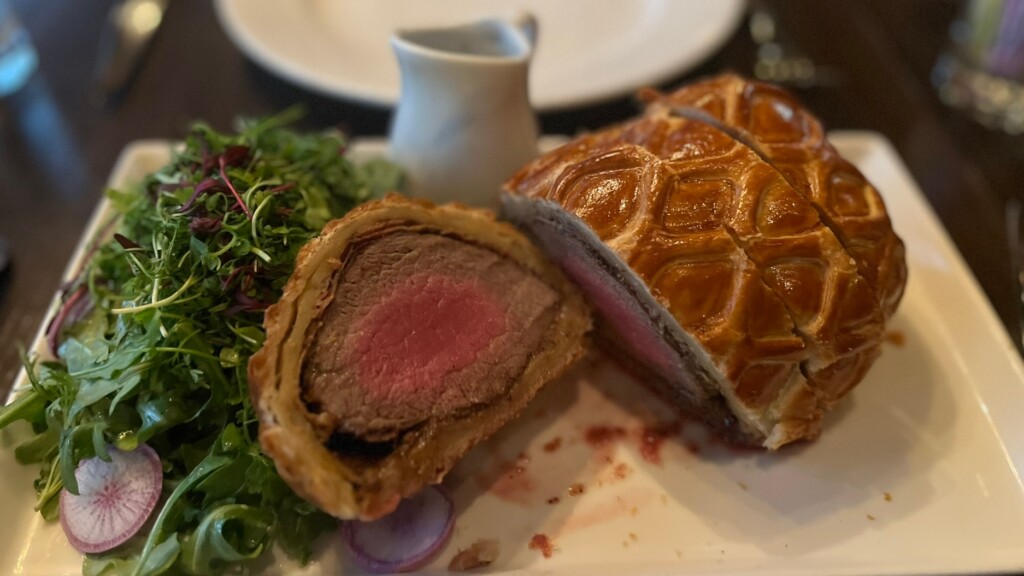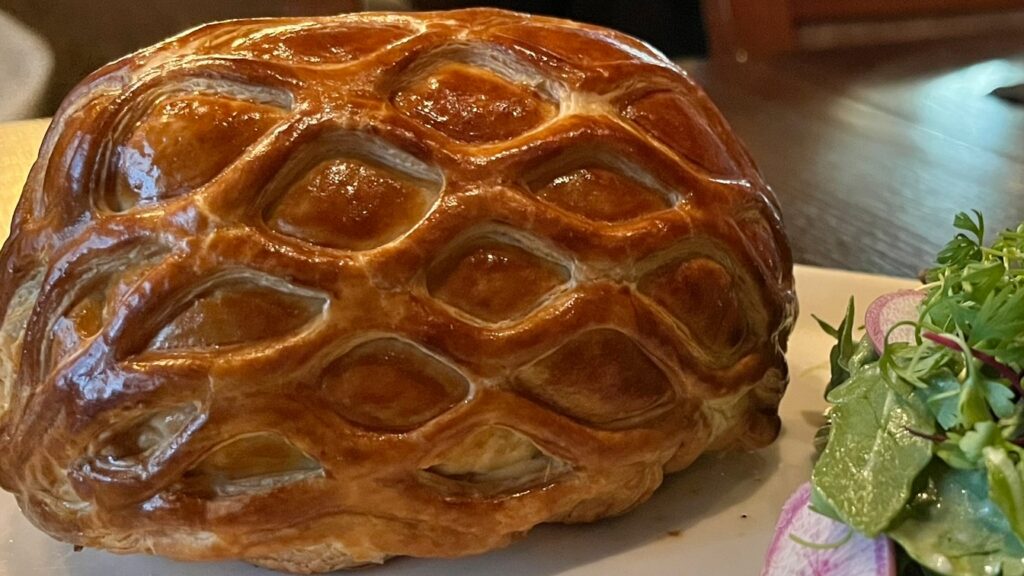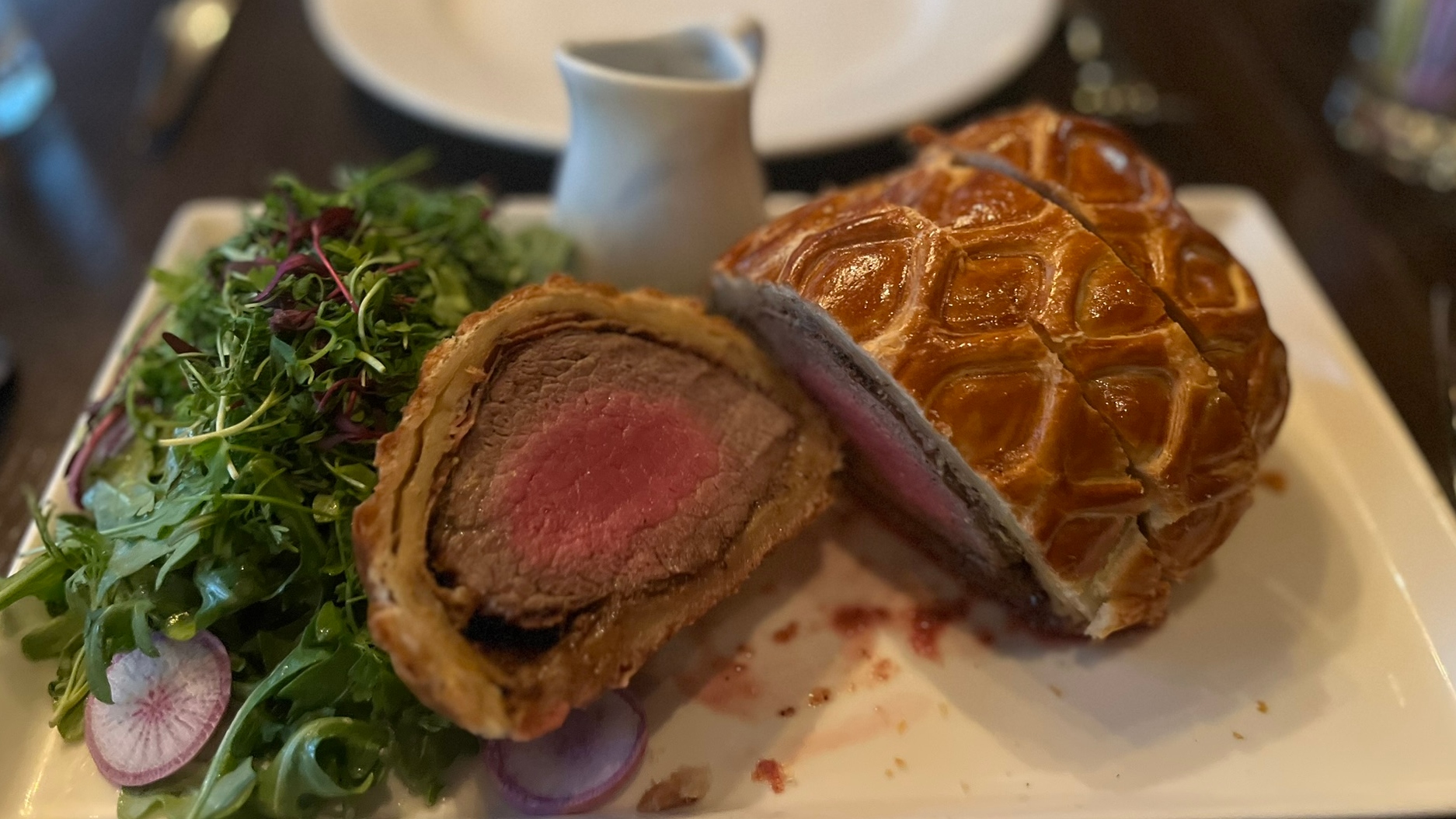
When bartaco in May opened a rooftop bar at its Riverside restaurant, it put out a call for local influencers to capture and share images of the venue’s “skyline views,” “bold patterns,” and “candid conversations + group cheers.”
In other words, some elements of food-and-beverage experiences reliably perform well on social media. Similarly, there are phone pix that tend to flop, such as snaps of the vaunted beef Wellington at Restaurant Orsay in Avondale.
“One thing I’ve learned is don’t post pictures of Orsay’s Wellington,” Adriana Farrell recently wrote in Facebook group The Scoop with Jax Restaurant Reviews after another poster’s enthusiastic endorsement of the $130 encased filet mignon drew condemnation for its accompanying visuals. Group members dismissed the dish as “terrible looking,” “awful,” “ruined,” and “sad” before administrators turned off comments.
Representatives of Orsay didn’t return multiple phone calls or email messages, so it’s unclear whether the popular bistro is aware of the online ire that some of its patrons have faced in the wake of their special occasions. But the gulf between reviews and the response to them is so vast that I paid a visit to the restaurant to try the Wellington, and to see if I could take a proper picture of it.

First, the Wellington is excellent, although that status is commensurate with the buyer’s investment. In addition to its triple-digit price tag, Orsay’s showstopper comes with a 24-hour notice requirement. When I called the day before my dinner reservation, the host told me I’d made the deadline by minutes.
I may have gotten off easy by house standards. According to my server, people have boarded jet planes just to taste Orsay’s version of the dish, which is appropriately rich, tender, and—much to my liking—saturated with Dijon mustard. (Not sure how the Duke of Wellington, who was forever fighting the French, would have felt about it.)
Second, nothing about my Wellington portraits struck me as especially objectionable, although I’m bracing for readers to tell me otherwise. So, I left the restaurant even more curious about why the social media backlash is predictably intense.
As it turns out, according to one scholar of food social media, the local anti-Wellington sentiment reflects how posting practices have changed in the last couple of years.
A decade ago, participating in food Instagram was often performative.
“It demonstrated your class standing and all the fun you’re having,” says Emily Contois, an associate professor of media studies at the University of Tulsa and co-editor of the 2022 book Food Instagram: Identity, Influence & Negotiation. “But there was also the more genuine piece of using Instagram like a scrapbook.”
Contois said her students would never post to the Instagram grid so nonchalantly. Instead, they use Instagram’s Stories function, so visual evidence of their restaurant meals vanishes within one day. It’s possible that’s because another social media platform has transformed how strangers react to dishes online.
“TikTok in particular brought out more food content to incite outrage,” Contois says. Responding negatively to food that’s assembled unnaturally — whether piled, plopped, or, perhaps, wrapped in puff pastry with prosciutto and mushrooms — is a contemporary reflex.
Still, such feedback is bound to pain the poster. “We want people to like what we post,” Contois says. “We want the restaurant to post it as free advertising. Those cycles of engagement make us feel good.”
Fortunately, fans of Orsay’s Wellington aren’t doomed to bad vibes.
Beef Wellington is a challenging dish to depict attractively. Aside from appearing flat and monochromatic once sliced, it’s seen by some as stodgy and Eurocentric. Yet Clay Williams, a James Beard Award-winning photographer and founder of Black Food Folks, has a few tips for phone-toting restaurant goers who want social media followers to enjoy the Wellington as much as they did.
“Sometimes good food isn’t pretty, and that’s totally fine,” Williams says. “But we do eat with our eyes to some degree, and with beef Wellington, the prettiest part is always the outside. People do amazing things with textures and ropes and quilt-looking things.”
At Orsay, servers are trained not to cut into the Wellington until diners are done documenting it. Williams would advise using that time to take a close-up of the honeycombed crust.

Next, Williams says, consider interacting with the dish. That doesn’t mean mugging alongside it, although Williams is a stickler for not letting the camera get in the way of people’s fun: If a group wants to enjoy its big-ticket item by taking Wellington selfies, Williams is on board. But as a photographer who just survived stew season, he’s in favor of shooting a single piece of meat on a fork.
“People try to do too much with their food pictures for the ‘gram when you can give the feeling with a part of it,” he says.
Another method that Williams advocates involves waiting until the potentially contentious Wellington’s been cleared away. After all, when people are celebrating birthdays, anniversaries or other Wellington-worthy moments, they’re generally more interested in capturing the mood of the evening than an unknown sous chef’s handiwork.
“I’ve taken to occasionally taking a picture of the mess afterward,” Williams says. “It’s a bit abstract; it’s not going to be gorgeous. But a wide shot of the remains of the day often gives a better feeling of the experience than individual shots of every dish.”
People online will never know what they missed.






